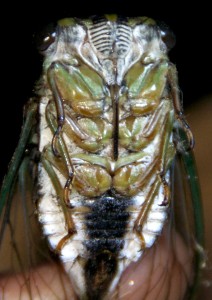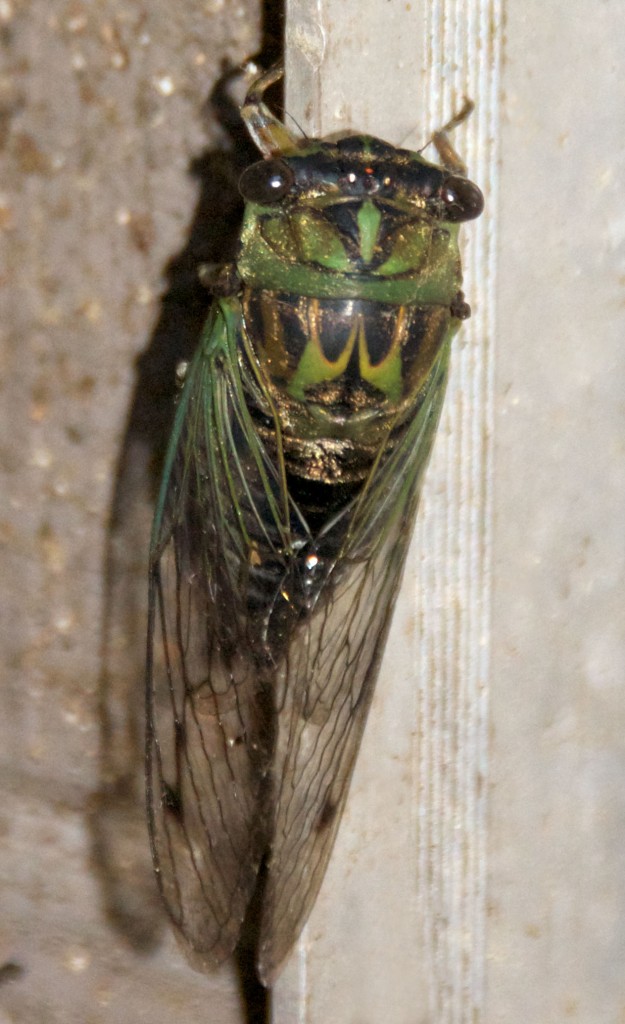Some nights I put up a sheet outside with a light to attract moths and other night-flying insects. In late summer this Cicada appeared. This is, I think, Tibicen canicularis, judging by the color pattern and the presence of green veins near the base of the wings. The short antennae characteristic of Cicadas can also be seen in the photograph to the right. This species has many common names in addition to Cicada including Locust, August Dry Bird, and Jar Fly. This type is a so-called “annual species, because reproduction is not synchronized, and individuals can be found every year. Periodical species have their reproduction synchronized and appear at regular intervals, such as every 17 years or every 13 years.

Ventral view of a Cicada showing the proboscis
Cicadas are in the “true bug” family (Hemiptera), characterized by having mouth parts modified into a tube or proboscis.
Hemiptera make their living by piercing things with their proboscis and sucking out the juices. The things pierced are plants in most species, but some are predators of other insects and small invertebrates. Some are even parasitic on larger animals. Cicadas, fortunately for us, only eat plant sap. The smaller photograph shows the underside of the same Cicada. The black proboscis can be seen tucked up under the midline of the body.


What beautiful images and your new blog looks great!